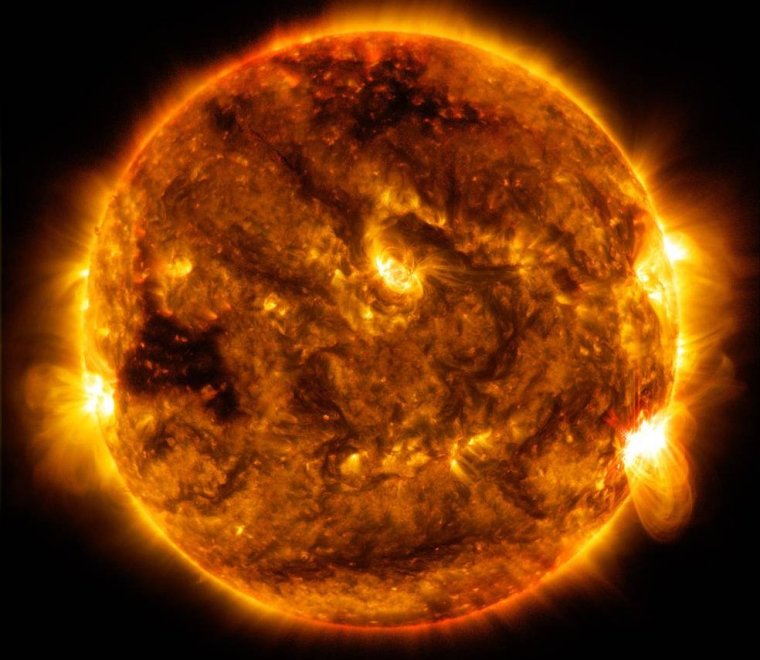| News / Science News |
How does radiation travel through dense plasma?
In addition to the well-known states of matter — solid, liquid and gas — a fourth state of matter, called plasma, is the most abundant form in the universe.

Improved plasma models may allow scientists to better understand star interiors and enable development of nuclear fusion as an energy source. Photo: NASA/SDO
Plasmas are found throughout the solar system in the sun and other planetary bodies. Because dense plasma, a hot soup of atoms with free-moving electrons and ions, usually forms only under extreme pressures and temperatures, scientists are still working to comprehend the fundamentals of this state of matter.
Understanding how atoms react under extreme pressure conditions, a field known as high-energy-density physics, or HEDP, gives scientists valuable insights into the fields of planetary science, astrophysics and fusion energy.
One important question in HEDP is how plasmas emit or absorb radiation. Current models depicting radiation transport in dense plasmas are based on theory rather than experimental evidence.
Researchers at the University of Rochester studied how radiation travels through dense plasma. The research provides first-of-its-kind experimental data about the behavior of atoms at extreme conditions.
The data will be used to improve plasma models, which allow scientists to better understand the evolution of stars and may aid in the realization of controlled nuclear fusion as an alternative energy source.
The researchers used X-ray spectroscopy to measure how radiation is transported through plasma.
X-ray spectroscopy involves aiming a beam of radiation in the form of X-rays at plasma made of atoms — in this case, copper atoms — under extreme pressure and heat.
The researchers' measurements indicate that when radiation travels through a dense plasma the changes in atomic energy levels do not follow conventional quantum mechanics theories often used in plasma physics models — so-called "continuum-lowering" models.
The researchers instead found that the measurements can best be explained using an approach based on density-functional theory, first described in the 1960s and the subject of the 1998 Nobel Prize in chemistry. (U.S. National Science Foundation)
YOU MAY ALSO LIKE





